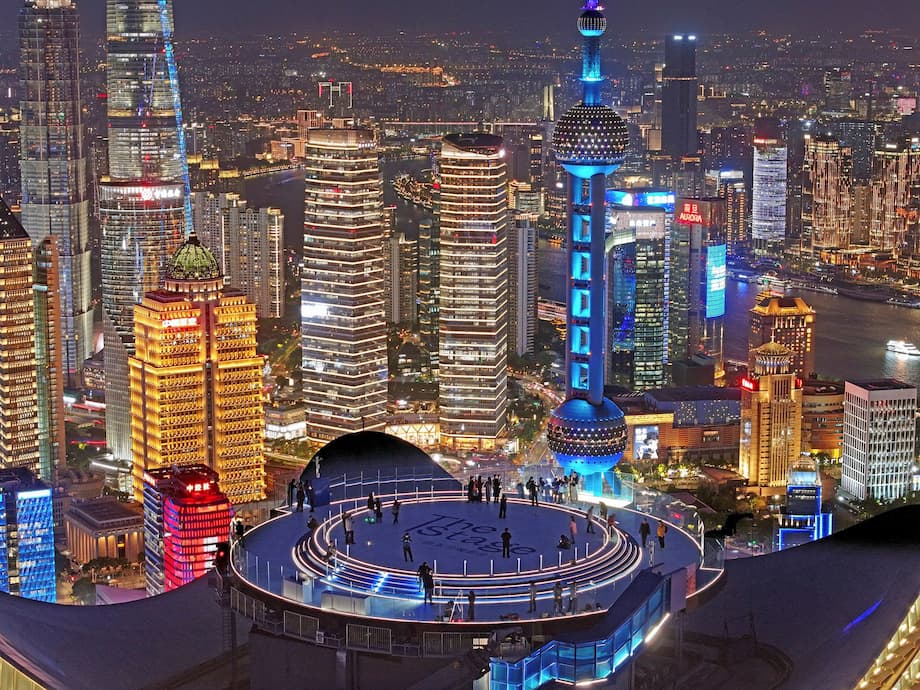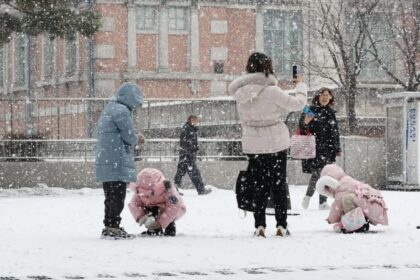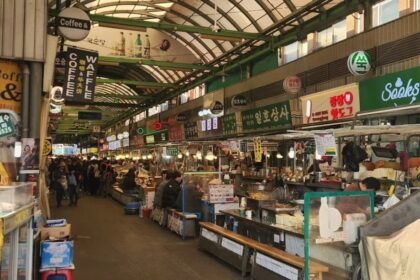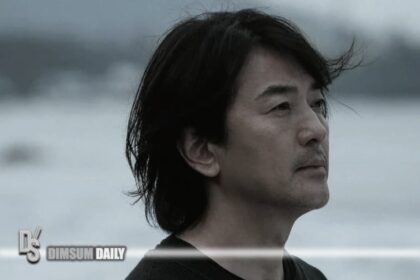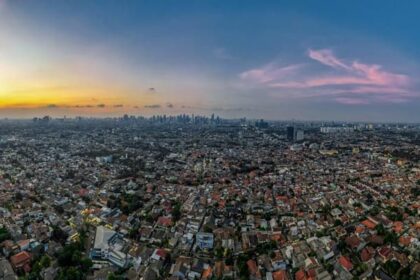Shanghai to Wuyuan: A Journey from Urban Marvels to Timeless Villages
China’s high-speed rail system has revolutionized travel across the country, shrinking vast distances and making it possible to experience the nation’s dazzling modernity and ancient traditions in a single trip. Nowhere is this contrast more striking than on the journey from Shanghai, a city of futuristic skyscrapers and bustling streets, to Wuyuan, a rural county in Jiangxi Province famed for its centuries-old villages and idyllic landscapes. In less than three hours, travelers can be whisked from the heart of one of the world’s largest cities to the tranquil countryside that has inspired Chinese artists for generations.
- Shanghai to Wuyuan: A Journey from Urban Marvels to Timeless Villages
- Why Take the High-Speed Train from Shanghai to Wuyuan?
- Planning Your Trip: Train Schedules, Tickets, and Practical Tips
- Shanghai: A City of Contrasts and Modern Wonders
- Wuyuan: Stepping into a Living Chinese Painting
- Beyond Wuyuan: Optional Stops and Scenic Detours
- How to Book Tickets and Navigate China’s Rail System
- What Makes the Shanghai-Wuyuan Journey Special?
- In Summary
Why Take the High-Speed Train from Shanghai to Wuyuan?
Shanghai is a city that never sleeps. With a population of over 25 million, it’s a global financial hub where neon-lit towers pierce the sky, luxury boutiques line the streets, and culinary delights await around every corner. The city’s efficient metro system makes exploring its diverse neighborhoods a breeze, from the historic Bund to the trendy Xuhui riverside promenade. Yet, for many visitors, the relentless pace of urban life eventually gives way to a longing for peace and natural beauty.
Enter Wuyuan, often described as “the most beautiful countryside in China.” Located in eastern Jiangxi Province, Wuyuan is a patchwork of rolling fields, winding streams, and ancient villages nestled between misty mountains. The region is renowned for its traditional Huizhou architecture, vibrant rapeseed flower fields in spring, and a way of life that seems untouched by time. Thanks to China’s extensive high-speed rail network, this rural paradise is now just a short train ride away from Shanghai.
Experiencing China’s High-Speed Rail
China’s high-speed trains, known as “G-class” and “D-class” trains, are among the fastest and most advanced in the world. Capable of speeds up to 350 kilometers per hour (about 217 miles per hour), these trains offer a smooth, comfortable, and punctual travel experience. As one traveler described in The Wall Street Journal:
“As I rocketed out of Shanghai aboard a train at nearly 200 miles an hour, the speed reduced the trees outside my window to greenish blurs. I had the out-of-body sense that I was fast-forwarding my way through China.”
Onboard amenities often include snack bars, clean restrooms, and even Starbucks coffee on some routes. The journey itself becomes part of the adventure, offering glimpses of both urban sprawl and rural tranquility through panoramic windows.
Planning Your Trip: Train Schedules, Tickets, and Practical Tips
Traveling from Shanghai to Wuyuan by train is straightforward, but a bit of planning ensures a smooth journey. Here’s what you need to know:
Train Options and Schedules
Currently, there are four pairs of high-speed trains and one normal-speed train operating between Shanghai and Wuyuan. The high-speed trains depart from Shanghai Hongqiao Railway Station and arrive at Wuyuan Railway Station, covering a distance of about 476 kilometers (296 miles) in as little as 2.5 to 3.5 hours. The main high-speed train numbers include G1509, G1455, D171, and D3323, with departures throughout the day. For those seeking a more leisurely pace or traveling overnight, a normal-speed train (K751) is also available, taking about 7 hours.
According to China Highlights and Trip.com, ticket prices for high-speed trains range from approximately $33 (second class) to $101 (business class), with first-class seats around $54. Children under 6 travel free without a seat, while those aged 6–14 pay half fare. Tickets can be booked online in advance or purchased at the station with a valid passport.
It’s recommended to book tickets early, especially during peak travel seasons such as spring (March–April) when Wuyuan’s rapeseed flowers are in full bloom. The Railway 12306 app, which offers an English version, is the official platform for ticket purchases and provides real-time information on schedules and seat availability.
Getting to and from the Stations
Shanghai Hongqiao Railway Station is about 22 kilometers (14 miles) from downtown Shanghai and is easily accessible by metro lines 2, 10, and 17, as well as numerous bus routes. Wuyuan Railway Station, the gateway to the region’s scenic villages, is located near the junction of Jiangwan Avenue and Zhantianyou Avenue. From the station, Wuyuan County is just 3 kilometers away, and the North Coach Station (for buses to villages) is 5.5 kilometers away. Taxis, local buses, and even bicycle rentals are available for onward travel.
Luggage and Onboard Experience
High-speed trains have luggage restrictions: adults can bring up to 20 kg, children 10 kg, and diplomats 35 kg, with size limits for each piece. Dangerous goods and most animals are not allowed, except for guide dogs with proper documentation. Onboard, passengers can choose from various seat classes, and amenities include snack bars and clean restrooms. Some trains even offer Wi-Fi and power outlets.
Shanghai: A City of Contrasts and Modern Wonders
Before departing for Wuyuan, take time to explore Shanghai’s unique blend of old and new. The city’s skyline is dominated by architectural marvels like the Shanghai Tower and the Oriental Pearl TV Tower, but its soul lies in historic districts and vibrant neighborhoods.
Must-See Sights in Shanghai
- The Bund: A riverside promenade lined with 52 historic buildings in styles ranging from Neo-classical to Gothic. The Bund offers stunning views of both colonial-era architecture and the futuristic Pudong skyline.
- The Stage: Shanghai’s latest observation deck, located atop the Magnolia Building, provides 360-degree panoramic views of downtown. It’s a perfect spot for sunset photography.
- Yuyuan Garden and Old Town: A maze of restored Ming and Qing dynasty buildings, bustling markets, and the famous nine-turn bridge. Don’t miss the city’s oldest tea house, Huxinting, and sample local dumplings at renowned restaurants.
- Xuhui Riverside Promenade: Once an industrial area, this riverside stretch is now a hub for art spaces, shops, pet parks, and leisurely strolls.
Shanghai’s culinary scene is equally diverse, with everything from street-side soup dumplings to Michelin-starred restaurants. The city’s efficient public transport makes it easy to hop between attractions, ensuring you make the most of your time before heading to the countryside.
Wuyuan: Stepping into a Living Chinese Painting
Arriving in Wuyuan feels like stepping back in time. The region’s villages, with their whitewashed walls, black-tiled roofs, and intricate wooden carvings, are straight out of a traditional Chinese ink painting. The landscape is especially enchanting in spring, when fields of golden rapeseed flowers blanket the hillsides, and in autumn, when crops are dried on rooftops in a riot of color.
Exploring Wuyuan’s Ancient Villages
Wuyuan is home to dozens of well-preserved villages, each with its own unique charm and history. Some of the most notable include:
- Yan Village: Just 20 minutes from the train station, Yan is a classic Huizhou hamlet known for its strong clan culture and tranquil atmosphere. The Skywells Hotel, a renovated 300-year-old Huizhou home, offers boutique accommodation and home-cooked meals made with local produce.
- Sixi Village: Another peaceful spot near Yan, Sixi is ideal for those seeking a quiet retreat amid ancient architecture and lush scenery.
- Huangling Village: Perched on a mountainside, Huangling is famous for its terraced fields, cable car rides, and the tradition of drying vegetables in round bamboo baskets. The village also features two glass-bottomed bridges and offers panoramic views of the surrounding countryside. As travel blogger Rachel Meets China notes:
“Huangling Village is a collection of ancient Hui-style buildings nestled into the mountainous scenery of Wuyuan County. It’s a fantastic place to view scenic landscapes, enjoy cultural activities, and see the flowers that bloom in spring.”
Visitors can reach Huangling by taxi or car from Wuyuan Station. The village is accessible via a giant bridge from Xiaoyongcun or by cable car from the main entrance. Inside, winding paths lead through shops, tea houses, and scenic viewpoints. Spring and autumn are the best times to visit, though weekends can be crowded.
Getting Around Wuyuan
Wuyuan Railway Station is well-connected to the county and surrounding villages. Local buses (No. 1 and No. 2) run from the station to the North Coach Station, where coaches depart for popular villages and scenic spots such as Likeng, Jiangwan, and Mandarin Duck Lake. Taxis are plentiful and affordable, and car rentals are available for those who prefer more flexibility. Bicycle rentals are a great option for exploring nearby villages at a leisurely pace.
Where to Stay and Eat
Wuyuan offers a range of accommodation options, from boutique hotels in renovated Huizhou homes to guesthouses in the villages themselves. Many hotels provide local cuisine, featuring ingredients sourced directly from nearby farms. Dishes are hearty and flavorful, reflecting the region’s agricultural heritage. It’s recommended to communicate with hotel owners via WeChat for easier pickup and coordination, especially in more remote areas.
Beyond Wuyuan: Optional Stops and Scenic Detours
The high-speed rail route between Shanghai and Wuyuan passes through several other noteworthy destinations. Consider adding a stop in:
- Suzhou: Renowned for its classical gardens, canals, and silk industry, Suzhou is often called “the Venice of the East.” The city’s UNESCO-listed gardens are masterpieces of landscape design.
- Hangzhou: Famous for its picturesque West Lake, tea plantations, and as the home of tech giant Alibaba, Hangzhou is a city where tradition and innovation coexist.
- Huangshan (Yellow Mountain): A UNESCO World Heritage Site, Huangshan is celebrated for its dramatic granite peaks, ancient pine trees, and sea of clouds. It’s a popular destination for hikers and photographers.
All of these cities are easily accessible by high-speed train, making it possible to craft a multi-stop itinerary that showcases the best of eastern China’s natural and cultural treasures.
How to Book Tickets and Navigate China’s Rail System
For international travelers, booking train tickets in China has become much easier in recent years. Tickets can be purchased at railway stations with a valid passport or online through platforms like the Railway 12306 app, which offers an English interface. All tickets are linked to your ID or passport, and electronic tickets are increasingly common. Paper tickets can still be printed at the station if needed.
It’s important to note that ticket refunds and changes are possible, but fees vary depending on how far in advance the request is made. Luggage restrictions apply, and security checks are standard at all stations. Arrive at the station at least 30 minutes before departure to allow time for ticket collection and boarding procedures.
What Makes the Shanghai-Wuyuan Journey Special?
The Shanghai to Wuyuan high-speed rail journey is more than just a convenient way to travel—it’s a window into China’s remarkable transformation. In a matter of hours, passengers move from the cutting edge of urban development to the heart of rural tradition. The experience offers a rare opportunity to witness the coexistence of past and present, innovation and heritage, in one of the world’s most dynamic countries.
As CNN’s travel feature put it:
“This juxtaposition offers a fascinating opportunity to soak in both China’s ultra-modern present and its famed past on a short trip.”
Whether you’re a first-time visitor or a seasoned traveler, the high-speed rail journey from Shanghai to Wuyuan is an unforgettable adventure that captures the essence of China’s diversity and resilience.
In Summary
- China’s high-speed rail connects Shanghai and Wuyuan in under three hours, making it easy to experience both urban excitement and rural tranquility.
- Shanghai offers world-class attractions, historic neighborhoods, and a vibrant food scene, while Wuyuan is renowned for its ancient villages and scenic landscapes.
- Four pairs of high-speed trains and one normal-speed train operate daily between Shanghai and Wuyuan, with ticket prices ranging from $33 to $101.
- Wuyuan’s highlights include Yan, Sixi, and Huangling villages, each offering unique cultural and natural experiences.
- Booking tickets is straightforward via the Railway 12306 app or at stations with a passport; plan ahead during peak seasons.
- The journey showcases China’s rapid modernization and enduring traditions, making it a must-do for travelers seeking a deeper understanding of the country.


